South to Kentucky: “Future Gun” Highlights from the 2014 Bullpup Convention
Edward Osborne 10.16.14
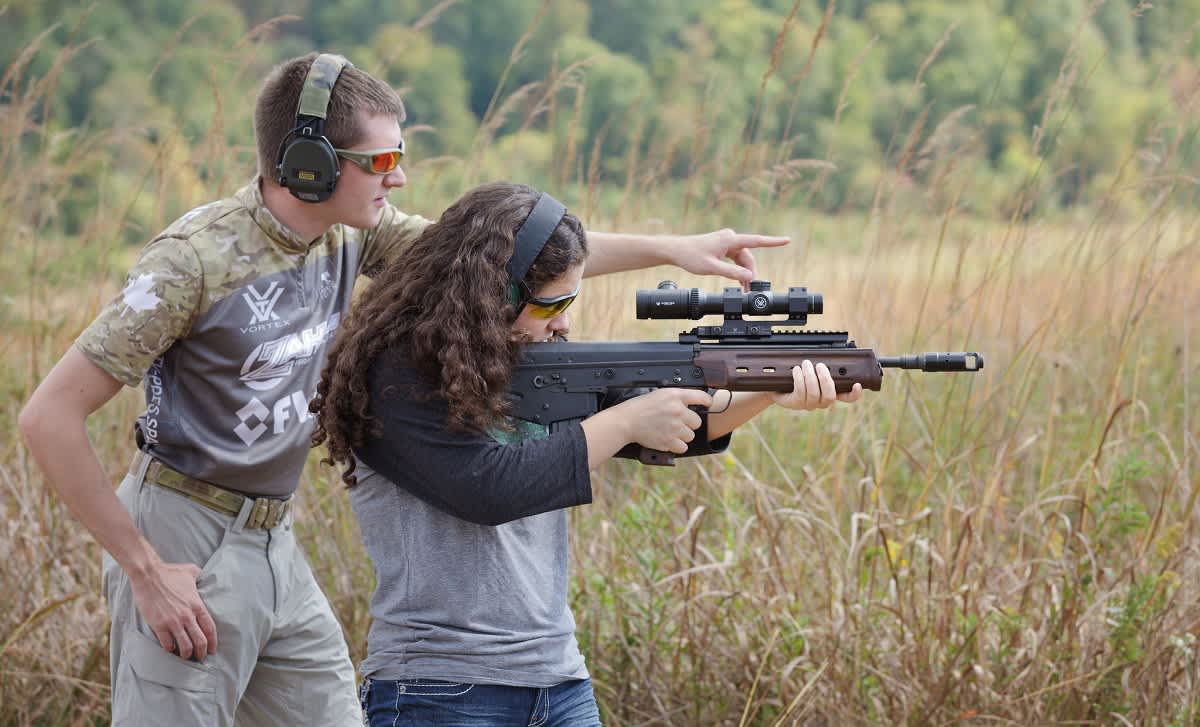
On the last weekend of September, Kentucky’s Rockcastle Shooting Center hosted the 2014 Bullpup Convention. I made the long flight down from Canada to tinker with some of the best bullpup guns currently available, and to get a peek into the future of the platform.
If you’ve never heard the word before, a bullpup-pattern rifle places the magazine well behind the trigger, effectively reducing the overall length of the firearm while keeping a full-length barrel. A bullpup layout lends a gun a futuristic look, even though they’ve been around for quite some time. The “classic” bullpup that most frequently comes to mind is the Steyr AUG, but decades of development have seen many new manufacturers making guns for both civilian and military use.
New guns
Three guns in particular received a lot of attention at the shoot: the Kel-Tec RDB and IWI US’ CTAR-21 and X95.
Kel-Tec RDB
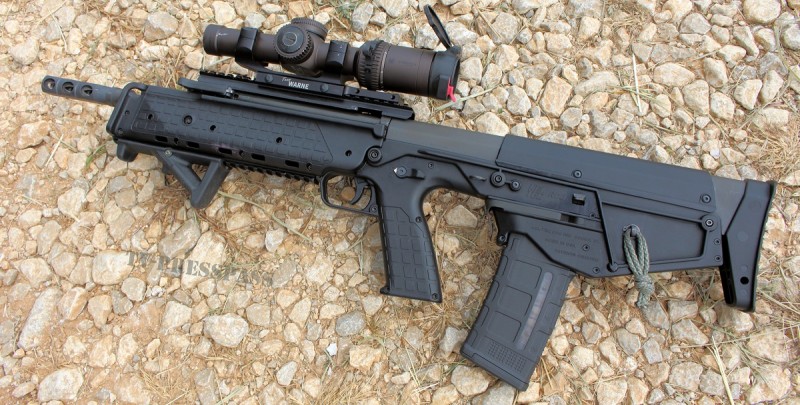
The Kel-Tec RDB was announced at the 2014 SHOT Show, but the Bullpup Convention was the first time the public could shoot the rifle for themselves. The RDB’s most notable feature is its downward ejection mechanism, which makes the rifle more left-handed friendly than previous bullpups. I’m pleased to report that mechanism is not the distraction I had initially feared; it’s largely unnoticeable.
The RDB pulls empty brass back across the magazine well and into the rear pocket of the rifle, where it drops straight down. This means that the bolt travels further than most rifles, but I did not find the rifle “bouncy,” nor did it have any noticeably high recoil—partially due to the exceptional front brake.
The length of pull is a little longer due to this additional space, but the RDB balances well. The alligator skin forearm runs right up to the muzzle device, which gives you lots of space to get a good grip.
IWI US CTAR-21 and X95
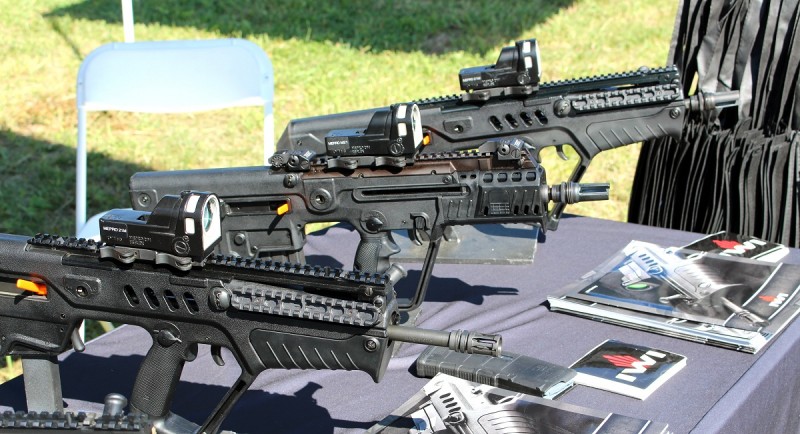
Since IWI (Israel Weapon Industries) US established their plant in Harrisburg, Pennsylvania and started producing semiautomatic variants of the Tavor rifle, the gun has really taken off. It is now arguably the most popular bullpup in the United States.
The law enforcement wing of IWI US was out at this event, and brought two unique guns with them. First was a CTAR-21, the short-barreled, select-fire variant of the rifle that won the NRA’s Golden Bullseye Award this year. Shooting full-auto is always a treat, especially for a Canadian like myself.
Second was the IWI X95. In Israel, the Israel Defense Forces (IDF) has begun to transition from the standard Tavor to the ultra-compact X95 (formerly known as the Micro Tavor or MTAR). This firearm features a 13-inch barrel, and some redesigned furniture to make for the smallest possible package. The non-reciprocating charging handle has been moved from the front of the rifle to the side, and the magazine release moved from the rear magazine-well onto the pistol grip to create a setup more familiar to shooters of the AR-15.
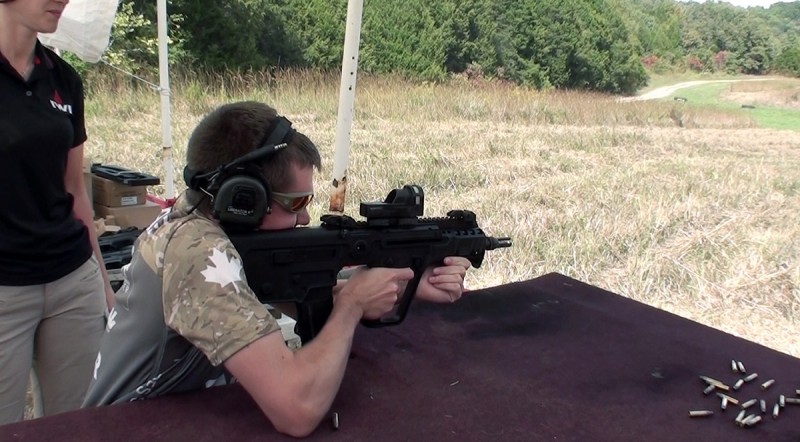
As a long-time Tavor owner, I’ve been waiting for years to try an X95. It really is a radically different platform, and realizes the concept of a PDW-sized gun with carbine capabilities.
I was pleased to find that the law enforcement-model X95 on display was using IWI’s new forend, a polymer hand-guard with a “hidden” quad-rail underneath. Each of the grip panels can be removed without tools to expose Picatinny rail sections below.
Unfortunately the ultra-short nature of the X95 means it could be quite some time before we see a semiauto-only variant. Between sourcing 922(r) compliance parts and the legal logistics of manufacturing a federally-regulated SBR or an extended-barrel variant, it’s an undertaking IWI US isn’t about to tackle just yet.
Prototypes
There were also a variety of prototypes on display, including some interesting rifles about to come to market and some ambitious personal projects.
K&M M17S308
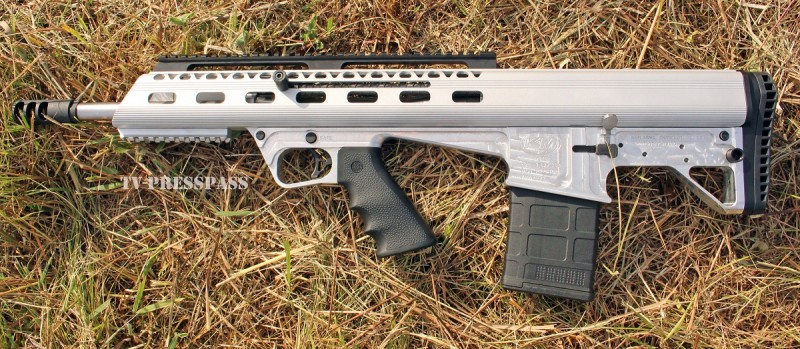
The M17S556 is a modernization of the classic .223 Bushmaster bullpup by K&M arms that brings the rifle into the 21st century. Its new setup features an aluminum lower, a flattop Picatinny rail, improved ejection, reduced weight, and an excellent trigger.
K&M had their first .308 variant of the M17S556 on display, the M17S308, which promises to finally put a competitor to Kel-Tec’s RFB on the market. The M17S308 shoulders nicely and can accept Magpul .308 PMAGs.
Leader 50 A1
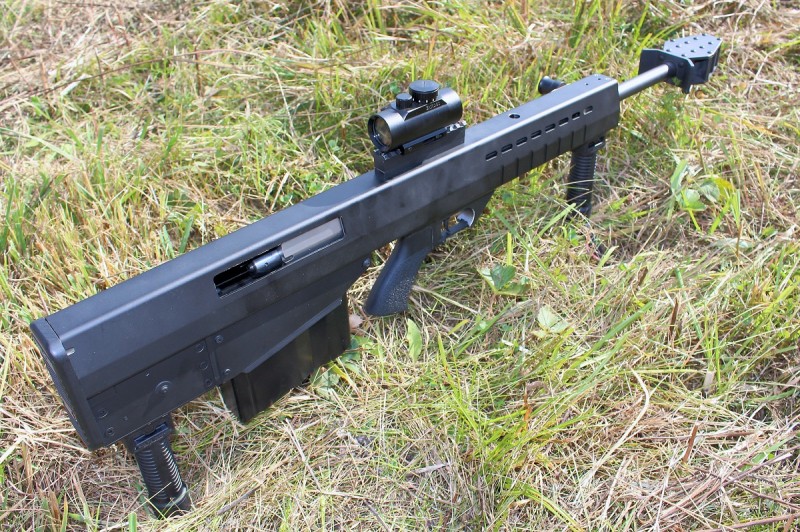
Upgunning even the M17S308, Charles St. George had a prototype of his Leader 50 A1 on display. This .50 BMG bullpup is uniquely light and compact when compared to other semiautomatic .50 caliber rifles, and fills a niche all its own. Look for an article on the design and history of the Leader 50 A1 next week.
300 BLK Tavor
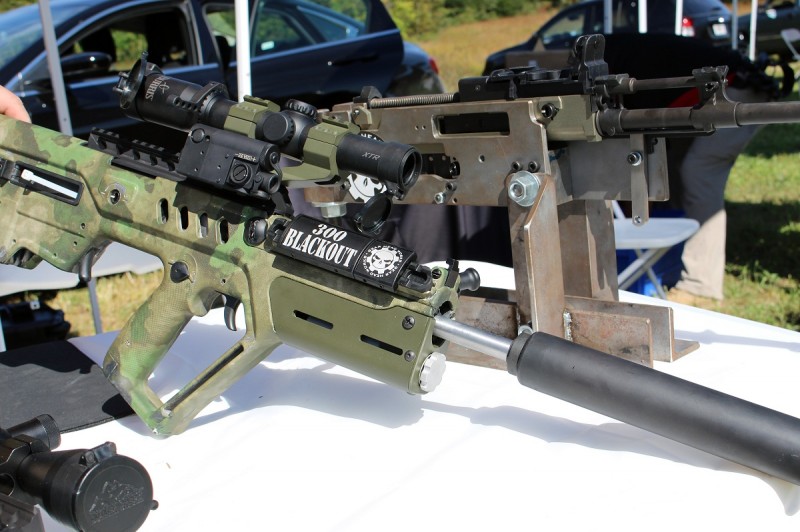
IWI US currently offers the Tavor in 5.56 and sells a 9x19mm conversion kit separately. But Paul Reavis was determined to try something different. His company, Gear Head Works, brought a single custom Tavor chambered in 300 BLK and equipped with a suppressor to the convention. This creation takes advantage of the 300 BLK’s dimensional similarities to 5.56, and makes it the first functioning .30 caliber Tavor in existence.
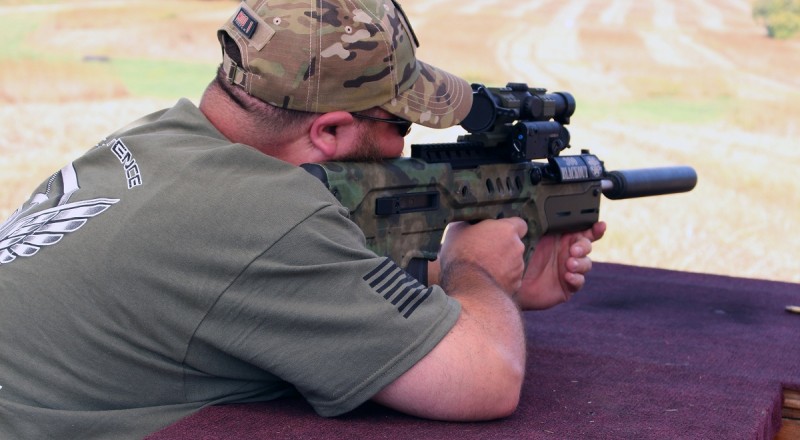
A small competitive shoot was also held with long-range, shotgun, rifle, and .22 LR portions, all featuring bullpup firearms.
The bullpup world was once a cloistered oddity, with precious few firearms and fans. But every year we’re seeing it grow more and more into a serious branch of quality firearms. Personally I was glad to attend, and am excited to see what the future holds.

